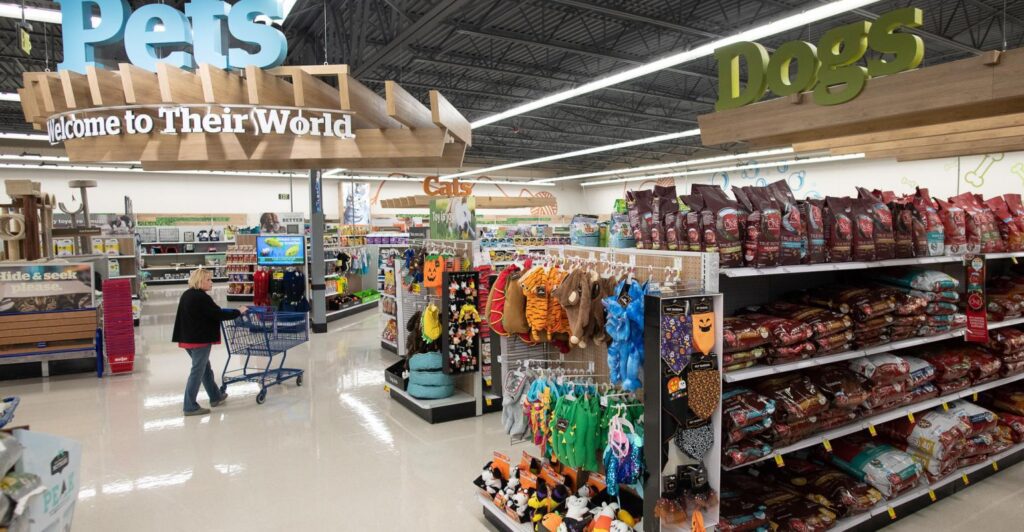Dog Food Trends to Watch Out For

The canine food market is growing. Brands of pet food need to evolve with the shifting preferences of their target market.
It has been seen that these trends are gaining popularity in the dog food market. Experts believe that the humanization of dogs is a primary driver of consumer behaviour and product development, and this tendency can be seen in many of the current dog food trends. There will be a further uptick in the demand for pet food that is on par with the human variety in terms of quality ingredients and a wide variety of brands.
Here are trends to watch:
Fresher Ingredients
Fresher and also less processed ingredients that are more nutritious are a priority for premium dog food makers.
Food is the cornerstone item for most retailers, and high-end diets are increasingly the major draw. People are improving their health, and as a result, they want to provide the best for their dogs. This has a direct impact on the demand for high-quality dog food.
Many of the trends in premium dog diets are driven by pet owners’ desire to provide their dog food that reflects what they would eat. Consequently, dietary trends that hit the mainstream with humans often make their way into the canine diet.
The growing demand for fresh foods is one such major shift. While it’s true that not every dog owner can provide 100% fresh food for their pup, the number of pet owners who see the importance of providing even a small amount of fresh food is growing. As a result, the practice of “creating your dog’s bowl,” in which owners add fresh ingredients and vitamins to their dog’s standard diet of dry food, has become more popular.
The trend toward eating healthier, more natural, and fresher meals may thank social media for helping to spread the word.
Customers looking to supplement their dog’s diet with high-quality fresh ingredients still have a difficult time convincing themselves to go raw. Consumers find raw to be unappealing and therefore define ‘fresh’ as ‘less processed,’ rather than raw.

Specificity of benefits
Pet owners, interested in providing the best possible nutrition for their pets, are increasingly asking about the sources and types of ingredients with their specific benefit
Over the last several years, there has been a significant rise in the interest of consumers in purpose-driven nutrition. Dog owners are looking for products like these that have been carefully chosen for their healing effects.
Now that consumers have more information at their disposal, they pay closer attention to both the ingredients in their food and the corporations that provide it.
They are aware that canines and felines are obligate carnivores and are hence on the lookout for meat-based recipes they can feel good about feeding their pets. Owners have a vested interest in providing a nutritious diet for their dogs, and as a result, companies have responded by developing foods with components that specifically target those requirements. This has led to a lot of new product ideas, such as alternatives without grains, new types of proteins, and diets with only one ingredient. All of these are in response to what customers want.
Sourced from sustainable sources
In recent years, customers have shown a strong preference for businesses and products that are committed to doing business in a socially and environmentally responsible manner. The public is more likely to support businesses that work to protect the Earth’s dwindling natural resources.
The United Nations projects that by 2050, the global population will have increased from its current 7.9 billion to 9.8 billion. Approximately 32 billion pounds of protein are consumed each year by dogs in the United States. Even though these huge numbers may not seem related, they all point to a shortage coming up because of high demand.
It is anticipated that sustainable food, packaging, and manufacturing practices will continue to skyrocket.
Constant and resounding reports of environmental degradation are becoming intolerable. That will result in a never-ending stream of demands for action. In the pet industry, savvy customers will choose insects and other alternative proteins like plant-based. Also, as people from Generation Z, who have grown up with a lot of digital information at their fingertips, become adults, the market for pets as a whole is likely to grow.
Increase in functional foods
Pet parents are looking for functional meals that might aid their dogs in unique ways. Life-stage diets and other specialised menus are available from various manufacturers. Because of the products, there is less need for extra nutrients and the products work better.
Consumers want products that provide their dogs with “more than simply adequate nutrition,” meaning they want additional advantages, components they recognise, and targeted answers to problems.
When pet owners find that one kind of dog food doesn’t meet their needs, they are prepared to spend money on supplemental toppings, treats, and other meal enhancers to make up for the difference.
Multi channel shopping
The way people are purchasing dog food is the most notable shift in the industry. There has been an increase in the percentage of dog owners who either just purchase online for their pets’ food or who use a combination of online and traditional shopping since the epidemic began.
Large, heavy sacks of dog food may be ordered online and delivered to your door, which is a huge time saver.
Certainly, as pet owners get more comfortable with online shopping, we should expect to see a rise in these types of consumer movements.
Online purchasing is here to stay. Many stores that used to only be able to sell in brick-and-mortar locations may now be able to compete well thanks to the rise of niche brands and how easy it is to sell online.
Knowing your customers, what they purchase, and how they purchase it is still foundational to keeping your brand at the forefront of buyers’ minds. This highlights the need to gain as much knowledge as possible about your customers to meet their needs in terms of the kind of items they desire, the features they expect, and the channels through which they prefer to make their purchases.



